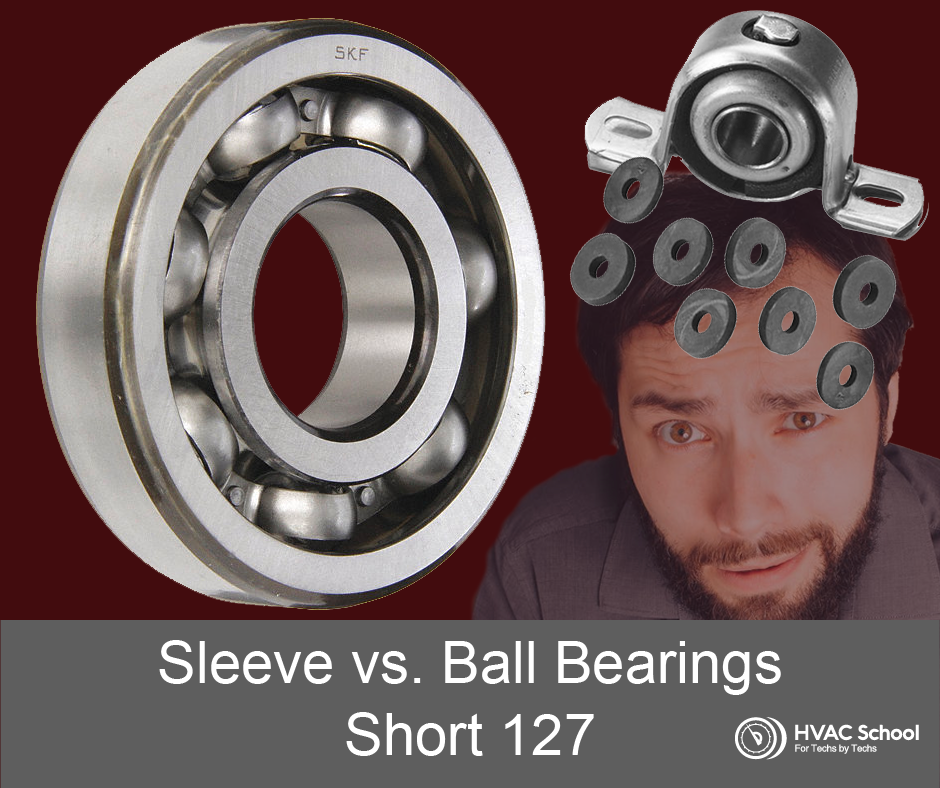Sleeve vs. Ball Bearings – Short 127

In today’s short podcast, Bryan explains the differences between sleeve and ball bearings. Techs often make some avoidable mistakes because they either don’t know the difference between the two or don’t notice the bearing type on their equipment.
On a basic sensory level, ball bearings tend to be louder than sleeve bearings. So, if you replace a sleeve bearing motor with a ball bearing motor, then excess noise may not indicate any problems after all. Lubrication is usually more consistent with ball bearings; those bearings have a far smaller contact area than sleeve bearings.
Sleeve bearings don’t usually have the best longevity; they have a larger contact area and can burn out quickly, so they are more common on smaller equipment where they will experience less intense axial forces. Those sleeve bearings also aren’t as effective as ball bearings in variable-speed equipment. When techs put in a motor speed control and don’t pay attention to the bearing type, they may end up burning up the motor if it has sleeve bearings.
To determine which type of bearings your equipment should use, you can take note of a few different things. Ask yourself if there are motor speed controls or any sort of motor speed variability. When the answer is yes, you’ll be better off using ball bearings. If longevity is a concern, then ball bearings are almost always the ideal choice.
If nuisance noise and inexpensiveness are greater issues than longevity, then you’ll be better off replacing a sleeve bearing motor with another sleeve bearing motor than a ball bearing motor.
Check out information on the 2022 HVACR Training Symposium HERE.
If you have an iPhone, subscribe to the podcast HERE, and if you have an Android phone, subscribe HERE.
You can also check out our handy calculators HERE.
Author:









Comments
To leave a comment, you need to log in.
Log In